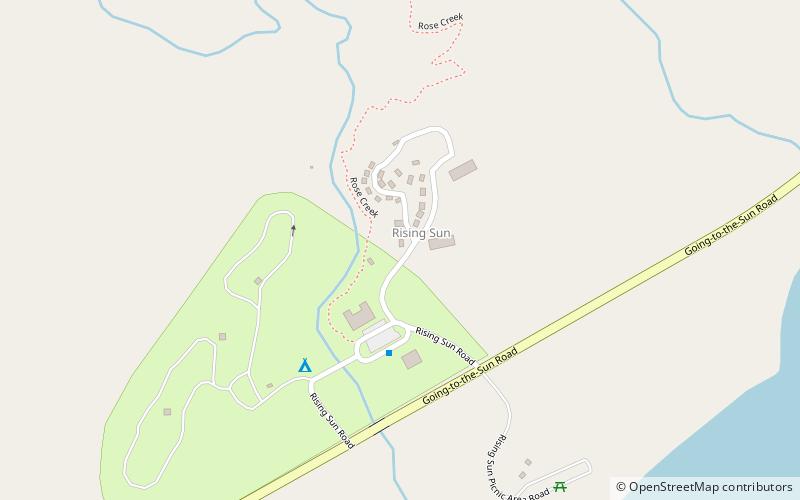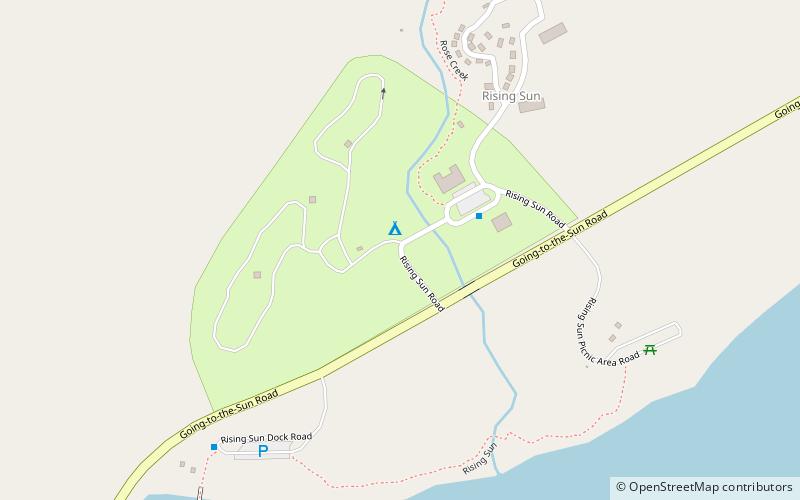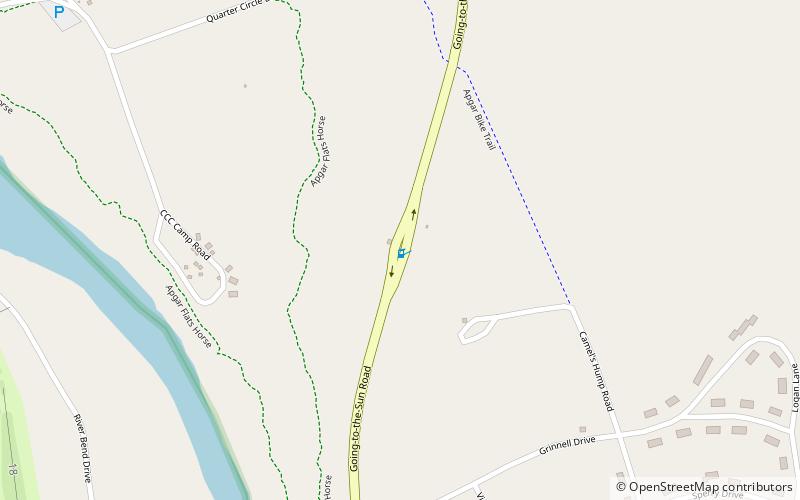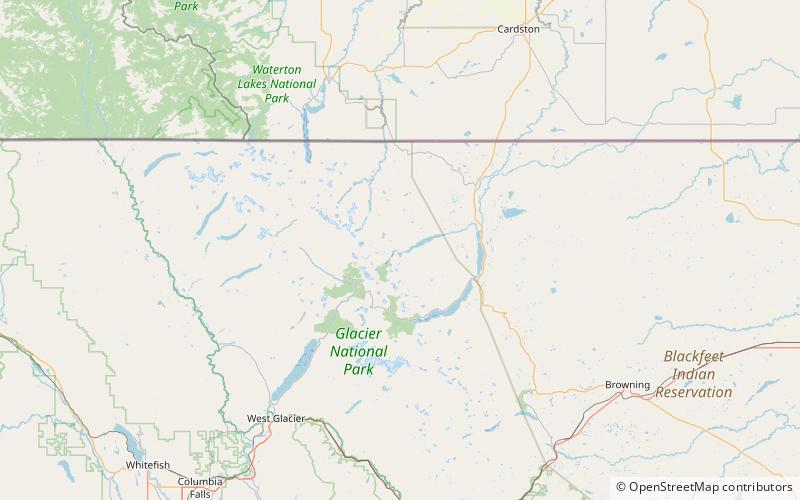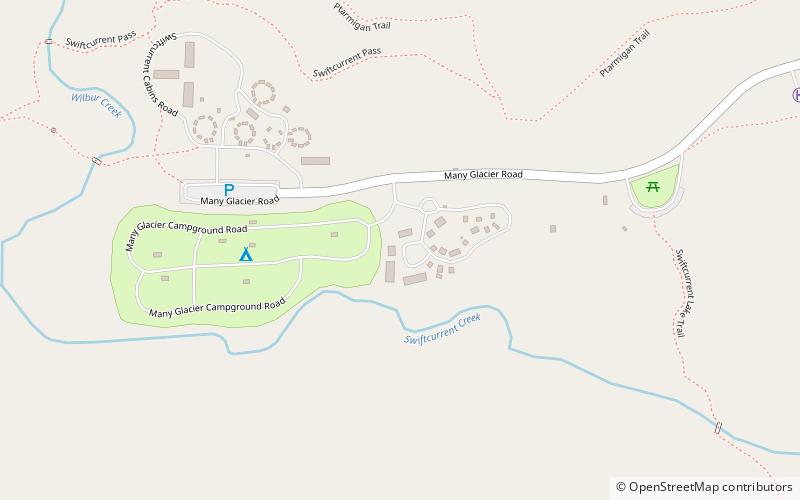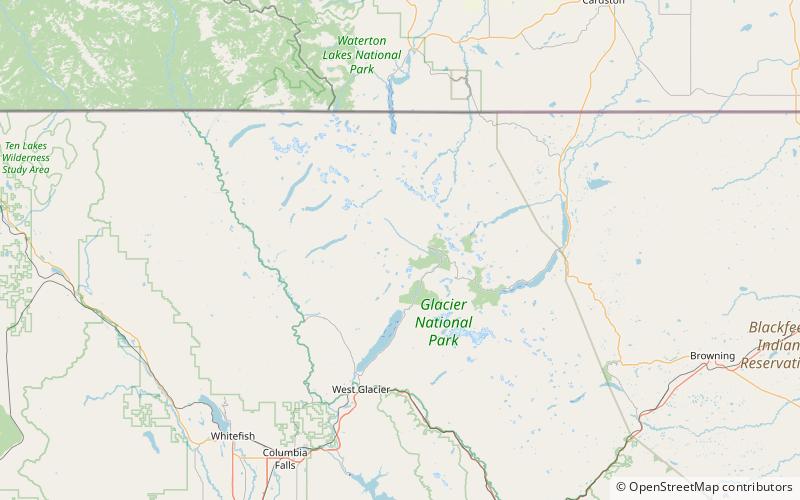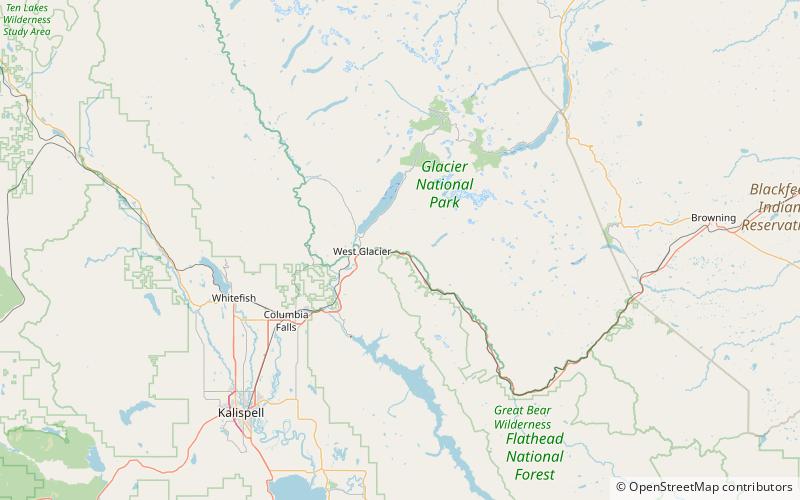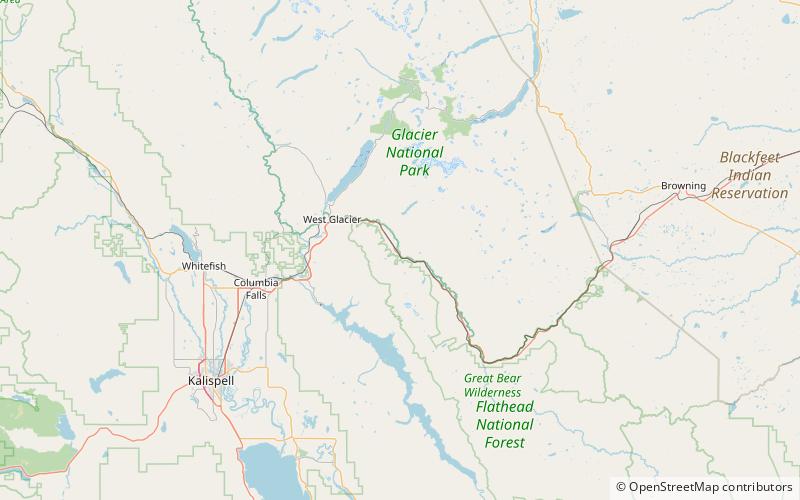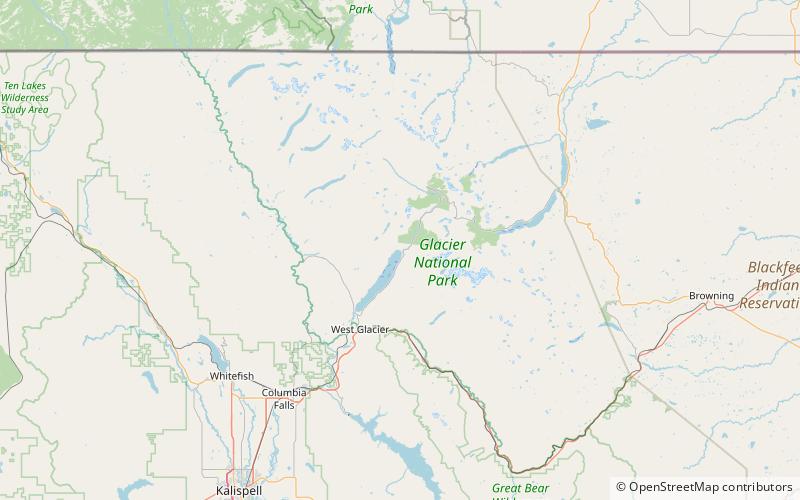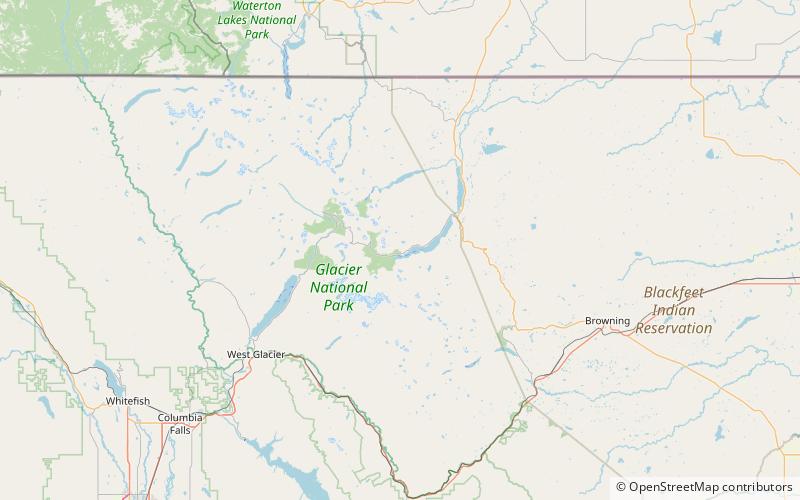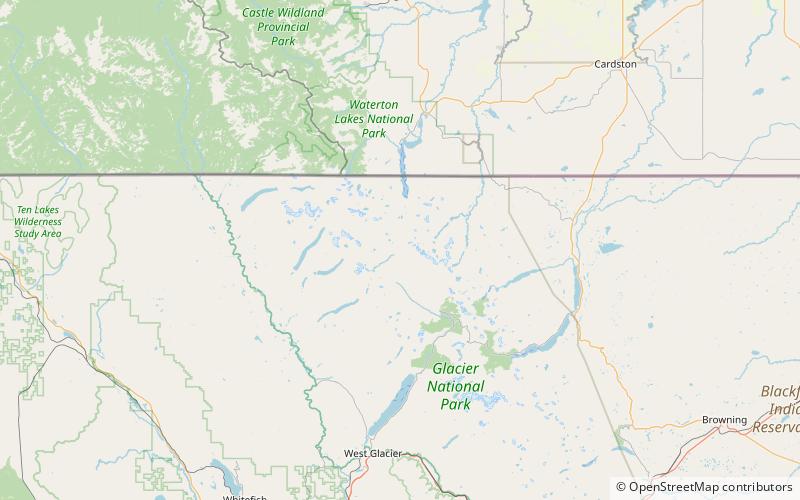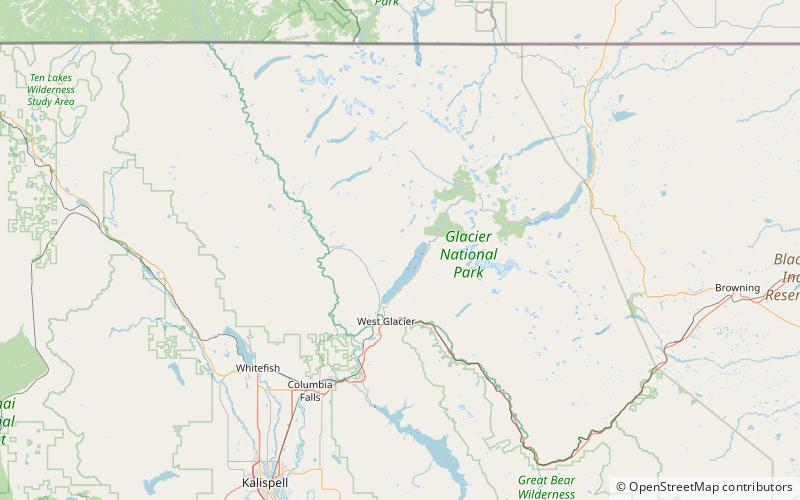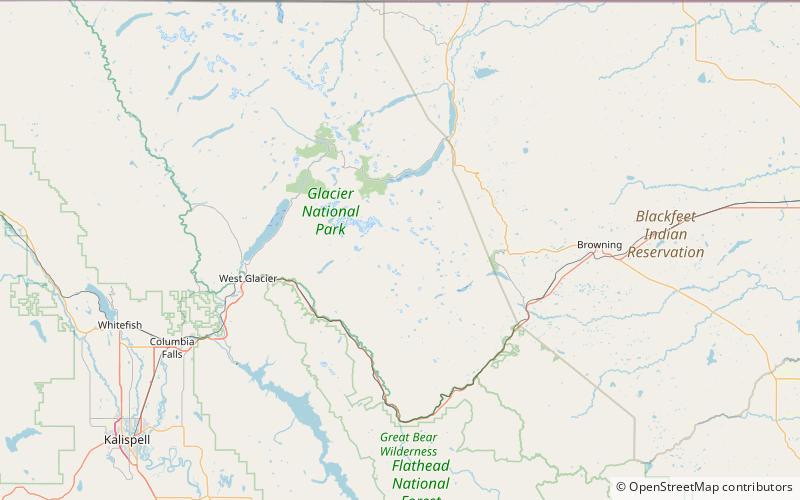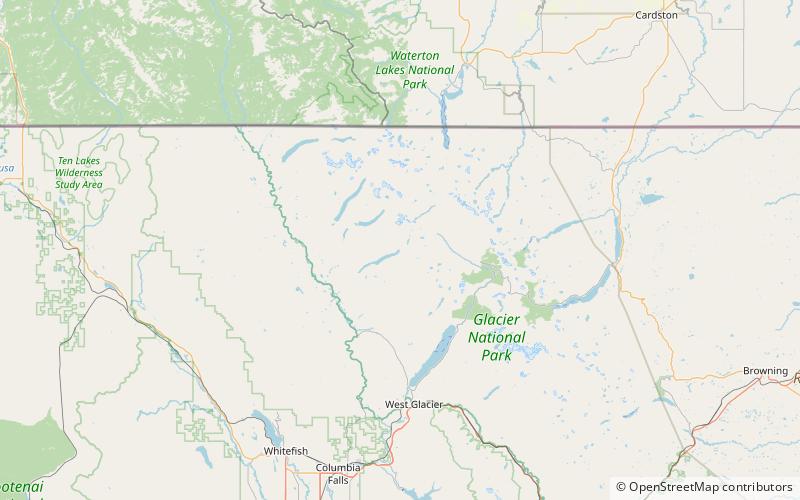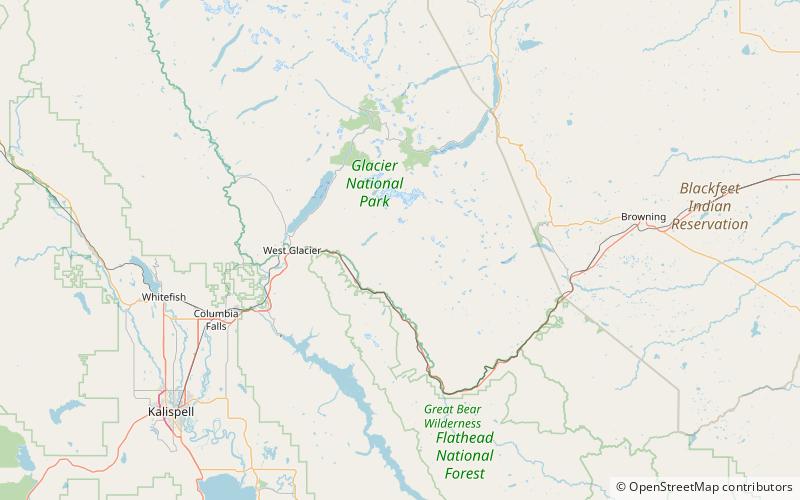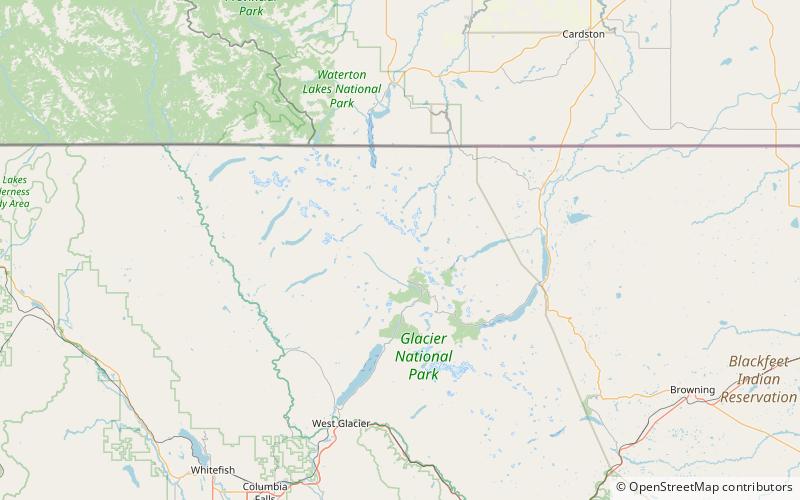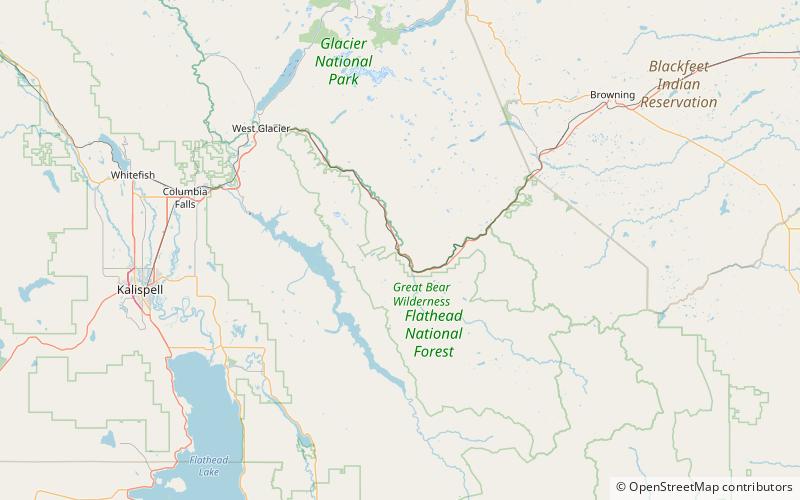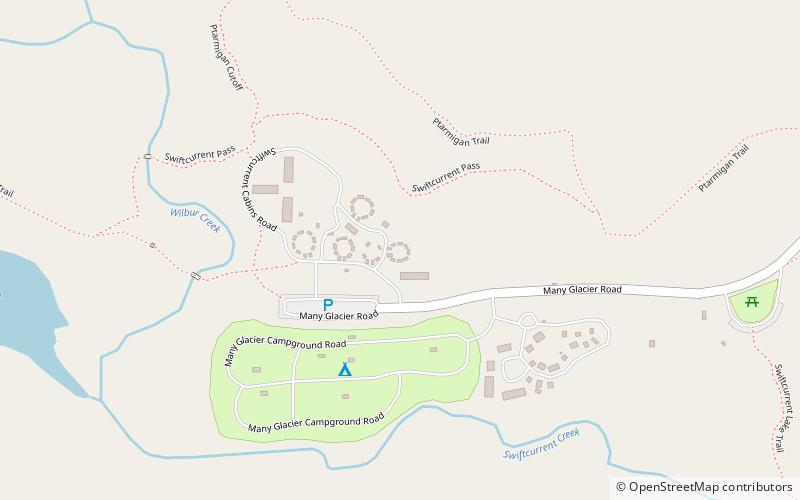Glacier National Park: Rustic Architecture
Places and attractions in the Rustic architecture category
Categories
- Natural attraction
- Nature
- Mountain
- Lake
- Natural feature
- Park
- Rustic architecture
- Waterfall
- Body of water
- Tower
Rising Sun Auto Camp
The Rising Sun Auto Camp, also known as the Roes Creek Auto Camp, East Glacier Auto Camp or simply Rising Sun preserves a portion of the built-up area of Glacier National Park that documents the second phase of tourist development in the park.
Roes Creek Campground Camptender's Cabin
The Roes Creek Campground Camptender's Cabin, also known as the Rising Sun Campground Ranger Cabin, in Glacier National Park is an example of the National Park Service Rustic style.
West Entrance Station
The West Entrance Station at Glacier National Park was built by the Civilian Conservation Corps in 1942. An example of the National Park Service Rustic style, it was designed by the National Park Service Branch of Plans and Design.
Many Glacier Barn and Bunkhouse
The Many Glacier Barn and Bunkhouse in Glacier National Park, also known as Packer's Roost East, were constructed to serve backcountry pack trail activities near the Many Glacier Hotel.
Swiftcurrent Ranger Station Historic District
The Swiftcurrent Ranger Station is an example of the Swiss Chalet style that prevailed in the early years of Glacier National Park, before the establishment of the similar National Park Service Rustic style. The station was designed by Edward A. Nickel and built by Ole Norden and S. M. Askevold.
Heaven's Peak Fire Lookout
The Heaven's Peak Fire Lookout in Glacier National Park, Montana, USA, is significant as one of a chain of manned fire lookout posts within the park. The one-story timber-construction with a flat roof was built in 1945. The flat, overhanging roof is anchored to the stone foundation with cables.
Many Glacier Campground Camptender's Cabin
The Many Glacier Campground Camptender's Cabin in Glacier National Park is an example of the National Park Service Rustic style.
Lincoln Creek Snowshoe Cabin
The Lincoln Creek Snowshoe Cabin, built in 1931, is a cabin in Glacier National Park. It has also been known as Lincoln Creek Cabin and as Building Inventory No. 617.
Nyack Ranger Station Historic District
The Nyack Ranger Station Historic District encompasses the remnants of the former ranger station. Only two buildings now remain: the barn, built in 1935 from plans by the National Park Service Branch of Plans and Design, and the fire cache cabin, built by Austin Weikert in 1935.
Sherburne Ranger Station Historic District
The Sherburne Ranger Station in Glacier National Park is an example of the National Park Service Rustic style. Located in the Swiftcurrent portion of the park, it was built in 1926.
Upper Lake McDonald Ranger Station Historic District
The Upper Lake McDonald Ranger Station in Glacier National Park was a formerly isolated site that became an administrative center with the opening of the Going-to-the-Sun Road.
Sun Camp Fireguard Cabin
The Sun Camp Fireguard Cabin, also known as the Baring Creek Cabin or Baring Cabin, in Glacier National Park was an example of the National Park Service Rustic style. Built in 1935 by local contractor Harry E.
Kootenai Creek Snowshoe Cabin
The Kootenai Creek Snowshoe Cabin was built in Glacier National Park in 1926. The rustic log structure comprises a single room with a woodstove, and a small cellar food cache.
Ford Creek Patrol Cabin
The Ford Creek Patrol Cabin in Glacier National Park was built in 1928. The National Park Service Rustic log structure was a significant resource both architecturally and historically as a network of shelters, approx. one day's travel apart, for patrolling backcountry rangers.
Upper Nyack Snowshoe Cabin
The Upper Nyack Snowshoe Cabin, built in 1926 in Glacier National Park, is a significant resource both architecturally and historically as a shelter, usually 8–12 miles apart, for patrolling backcountry rangers.
Pass Creek Snowshoe Cabin
The Pass Creek Snowshoe Cabin, built in 1938 in Glacier National Park, is a significant resource both architecturally and historically as a shelter, usually 8–12 miles apart, for patrolling backcountry rangers.
Upper Logging Lake Snowshoe Cabin
The Upper Logging Lake Snowshoe Cabin was built in 1925 in Glacier National Park. The National Park Service Rustic as a shelter for rangers patrolling the backcountry.
Lower Nyack Snowshoe Cabin
The Lower Nyack Snowshoe Cabin, built in 1927 in Glacier National Park, is a significant resource both architecturally and historically as a shelter about one day's travel north of the Theodore Roosevelt Highway for patrolling backcountry rangers.
Cattle Queen Snowshoe Cabin
The Cattle Queen Snowshoe Cabin, near West Glacier, Montana is a National Park Service log cabin built in 1923. It was listed on the National Register of Historic Places in 1999.
Loneman Fire Lookout
The Loneman Fire Lookout in Glacier National Park is significant as one of a chain of manned fire lookout posts within the park. The low two-story timber-construction structure with a pyramidal roof was built in 1933. The lookout uses a standard design originated by the U.S. Forest Service.
Logan Creek Patrol Cabin
The Logan Creek Patrol Cabin in Glacier National Park is a rustic backcountry log cabin. Built in 1925, the cabin has a single room.
Walton Ranger Station Historic District
The Walton Ranger Station in Glacier National Park was constructed to "Standard Ranger Station, GNP" plans as a year-round station at Walton to replace the old Paola Ranger Station and to place a station near US 2, a well-traveled highway through the park. The National Park Service Rustic structure is typical of its time period.
Numa Ridge Fire Lookout
The Numa Ridge Fire Lookout in Glacier National Park is significant as one of a chain of manned fire lookout posts within the park. The low two-story timber-construction structure with a pyramidal roof was built in 1933. The lookout was built to a standard plan originated by the U.S.
Swanson Boathouse
The Swanson Boathouse, also known as the Two Medicine Boathouse, was built in 1936 by concessioner Billy Swanson at Two Medicine Lake in Glacier National Park. The rustic structure remains in its intended use. The boathouse was built by Captain J.W. "Billy" Swanson, who operated a launch on Two Medicine Lake.
Great Northern Railway Buildings
The Great Northern Railway Buildings are a set of five building complexes in or near Glacier National Park in Montana. They were built by the Great Northern Railway during the period of the park's founding to provide a unified tourist experience to visitors to the park, using the Swiss chalet as a building model.
Swiftcurrent Auto Camp Historic District
The Swiftcurrent Auto Camp Historic District preserves a portion of the built-up area of Glacier National Park that documents the second phase of tourist development in the park.
Map

